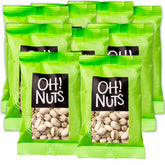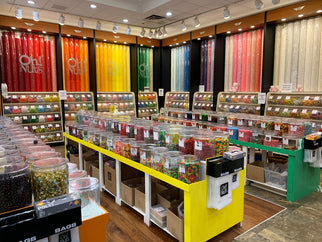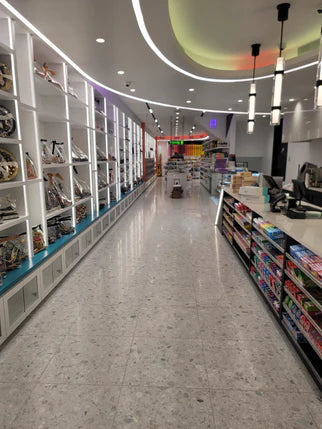Collection:
Pistachios
(25 products)-
Select an option
1 LB Bag-$11.49
5 LB Bag-$52.59
25 LB Case-$215.09
Select an option
1 LB Bag-$11.49
5 LB Bag-$52.59
25 LB Case-$215.09
Roasted Salted Pistachios
-
Select an option
1 LB Bag-$32.99
5 LB Bag-$133.99
22 LB Case-$529.29
Select an option
1 LB Bag-$32.99
5 LB Bag-$133.99
22 LB Case-$529.29
Turkish Antep Pistachios- Freshly Roasted & Lightly Salted
-
Select an option
1 LB Bag-$15.99
5 LB Bag-$73.95
25 LB Case-$277.35
Select an option
1 LB Bag-$15.99
5 LB Bag-$73.95
25 LB Case-$277.35
Israeli Style Roasted Salted Pistachios
-
Select an option
8 oz Bag-$12.89
5 LB Bag-$117.49
30 LB Case-$576.79
Select an option
8 oz Bag-$12.89
5 LB Bag-$117.49
30 LB Case-$576.79
No Shell Roasted Unsalted Pistachios
-
Select an option
8 oz Bag-$12.89
5 LB Bag-$117.49
30 LB Case-$576.79
Select an option
8 oz Bag-$12.89
5 LB Bag-$117.49
30 LB Case-$576.79
No Shell Roasted Salted Pistachios
-
Select an option
1 LB Bag-$11.89
5 LB Bag-$54.49
25 LB Case-$222.79
Select an option
1 LB Bag-$11.89
5 LB Bag-$54.49
25 LB Case-$222.79
Roasted Unsalted Pistachios
-
Select an option
8 OZ. Bag-$12.49
30 LB Case-$560.59
Select an option
8 OZ. Bag-$12.49
30 LB Case-$560.59
No Shell Raw Pistachios
-
Select an option
1 LB Bag-$15.09
5 LB Bag-$69.99
25 LB Case-$282.59
Select an option
1 LB Bag-$15.09
5 LB Bag-$69.99
25 LB Case-$282.59
Red Pistachios - Roasted Salted
-
Select an option
1 LB Bag-$25.99
5 LB Bag-$109.99
25 LB-$489.99
Select an option
1 LB Bag-$25.99
5 LB Bag-$109.99
25 LB-$489.99
Ground Pistachio Nut Flour
-
Select an option
8 oz Bag-$14.69
1 LB Bag-$27.89
5 LB Bag-$126.99
Select an option
8 oz Bag-$14.69
1 LB Bag-$27.89
5 LB Bag-$126.99
Dark Chocolate Covered Pistachios
-
Select an option
12CT-$19.09
60CT Box-$83.69
120CT Case-$149.99
Select an option
12CT-$19.09
60CT Box-$83.69
120CT Case-$149.99
Roasted Salted Pistachios Snack Packs - 12CT
-
Select an option
1 LB Bag-$14.39
25 LB Case-$269.59
Select an option
1 LB Bag-$14.39
25 LB Case-$269.59
Salt and Pepper Pistachios
-
Select an option
1 LB Bag-$10.99
25 LB Case-$257.35
Select an option
1 LB Bag-$10.99
$14.99 Sale25 LB Case-$257.35
Dijon Pistachios
Sale -
Select an option
1 LB Bag-$12.99
5 LB Bag-$48.00
25 LB Case-$269.87
Select an option
1 LB Bag-$12.99
$14.49 Sale5 LB Bag-$48.00
$63.97 Sale25 LB Case-$269.87
Onion and Garlic Pistachios
Sold out -
Select an option
1 LB Bag-$14.39
25 LB Case-$269.59
Select an option
1 LB Bag-$14.39
25 LB Case-$269.59
Chili Lemon Pistachios
-
Select an option
1 LB Bag-$12.99
25 LB Case-$269.87
Select an option
1 LB Bag-$12.99
$14.99 Sale25 LB Case-$269.87
Jalapeno Pistachios
Sale -
Select an option
12CT-$18.99
60CT Box-$83.69
120CT Case-$149.99
Select an option
12CT-$18.99
60CT Box-$83.69
120CT Case-$149.99
Roasted Unsalted Pistachios Snack Packs
-
Select an option
1 LB Bag-$20.49
22 LB Case-$336.59
Select an option
1 LB Bag-$20.49
22 LB Case-$336.59
Roasted Unsalted Turkish Antep Pistachios
-
Select an option
8 oz Box-$19.89
5 LB Case-$211.79
Select an option
8 oz Box-$19.89
5 LB Case-$211.79
Dark Chocolate Pistachio Bark
-
-
Select an option
12CT-$19.09
60CT Box-$83.69
120CT Case-$143.39
Select an option
12CT-$19.09
60CT Box-$83.69
120CT Case-$143.39
Lightly Salted Turkish Antep Pistachios Snack Packs
Sold out -
-

![[PRIMARY_IMAGE]](http://ohnuts.com/cdn/shop/files/1746651356077_0_lmzffo.jpg?v=1746651362&width=165)
![[PRIMARY_IMAGE]](http://ohnuts.com/cdn/shop/files/1746649925561_0_4qq4vn.jpg?v=1746649930&width=165)
![[PRIMARY_IMAGE]](http://ohnuts.com/cdn/shop/files/1746717165282_0_6rbe6e.jpg?v=1746717170&width=165)
![[PRIMARY_IMAGE]](http://ohnuts.com/cdn/shop/files/1746651467452_0_nhqwf6.jpg?v=1746651472&width=165)
![[PRIMARY_IMAGE]](http://ohnuts.com/cdn/shop/files/1746651473341_0_2xopl5.jpg?v=1746651478&width=165)
![[PRIMARY_IMAGE]](http://ohnuts.com/cdn/shop/files/1746651364469_0_zec8px.jpg?v=1746651370&width=165)
![[PRIMARY_IMAGE]](http://ohnuts.com/cdn/shop/files/1746650708762_0_8219vt.jpg?v=1746650713&width=165)
![[PRIMARY_IMAGE]](http://ohnuts.com/cdn/shop/files/1746651555072_0_df3c7d.jpg?v=1746651557&width=165)
![[PRIMARY_IMAGE]](http://ohnuts.com/cdn/shop/files/1746692445242_0_bwopbw.jpg?v=1746692497&width=165)
![[PRIMARY_IMAGE]](http://ohnuts.com/cdn/shop/files/1746651502958_0_r7wxja.jpg?v=1746651506&width=165)

![[PRIMARY_IMAGE]](http://ohnuts.com/cdn/shop/files/1746651563081_0_fsjamm.jpg?v=1746651565&width=165)
![[PRIMARY_IMAGE]](http://ohnuts.com/cdn/shop/files/1746719183937_0_waqclj.jpg?v=1746719188&width=165)
![[PRIMARY_IMAGE]](http://ohnuts.com/cdn/shop/files/1746699678214_0_efux43.jpg?v=1746699697&width=165)
![[PRIMARY_IMAGE]](http://ohnuts.com/cdn/shop/files/1746651558811_0_yng7g8.jpg?v=1746651561&width=165)
![[PRIMARY_IMAGE]](http://ohnuts.com/cdn/shop/files/1746650770006_0_uo9b74.jpg?v=1746650775&width=165)
![[PRIMARY_IMAGE]](http://ohnuts.com/cdn/shop/files/1746672644262_0_wp31u4.jpg?v=1746672650&width=165)
![[PRIMARY_IMAGE]](http://ohnuts.com/cdn/shop/files/1746717107444_0_pyetjz.jpg?v=1746717111&width=165)
![[PRIMARY_IMAGE]](http://ohnuts.com/cdn/shop/files/1746686591082_0_hff6ev.jpg?v=1746686609&width=165)
![[PRIMARY_IMAGE]](http://ohnuts.com/cdn/shop/files/1746720552751_0_u1khim.jpg?v=1746720555&width=165)
![[PRIMARY_IMAGE]](http://ohnuts.com/cdn/shop/files/1746721302772_0_qal5s2.jpg?v=1746721306&width=165)
![[PRIMARY_IMAGE]](http://ohnuts.com/cdn/shop/files/1746722392446_0_651wb3.jpg?v=1746722395&width=165)
![[PRIMARY_IMAGE]](http://ohnuts.com/cdn/shop/files/1746682471690_0_mw98cu.jpg?v=1746682498&width=165)
![[PRIMARY_IMAGE]](http://ohnuts.com/cdn/shop/files/1746721049558_0_flcbuk.jpg?v=1746721052&width=165)
![[PRIMARY_IMAGE]](http://ohnuts.com/cdn/shop/files/1746717221796_0_hcgis1.jpg?v=1746717224&width=165)




